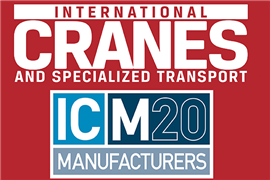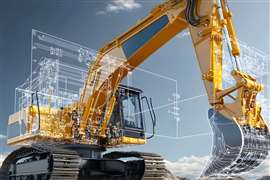Read this article in 中文 Français Deutsch Italiano Português Español
Tunnel vision: The challenges building Melbourne’s new A$12.6bn megaproject
18 March 2024
Melbourne’s A$12.6bn Metro Tunnel megaproject is set to open ahead of schedule next year as part of the Victorian government’s grand plan to make it easier and greener for the city’s rising population to get around. Lucy Barnard speaks to Metro Tunnel delivery director Jim Heron to find out about the challenges involved in building it.
Deep beneath the glass and steel skyscrapers of Melbourne city centre, a new subterranean world has appeared.
Shiny escalators lead down to five cathedral-like stations and out onto long platforms, shielded by automatic doors, as empty blue and white metro trains rumble along a newly completed tunnel.
This is Melbourne’s twin 9km long Metro Tunnel, which runs from South Kensington in the northwest of the central business district (CBD) to South Yarra in the southeast, connecting three of the city’s ten existing underground lines together to form its first continuous east-west line, unscrambling a bottle neck in the existing network and relieving pressure on roads and trams.
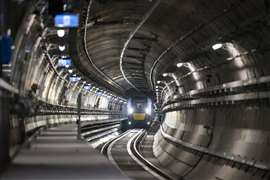
For Jim Heron, Metro Tunnel deputy delivery director, the man who has been overseeing the project on behalf of Victoria state agency, Rail Projects Victoria, since October 2021, the A$12.6bn (US$8.2bn) infrastructure upgrade is a symbol of Melbourne’s snowballing size.
“The Metro Tunnel will help cater to Melbourne’s growing population,” he tells Construction Briefing. “The city’s population set to be the size of London’s [current population] by the 2050s. Economic activity and full-time employment is already well above pre-pandemic levels.
Certainly, Melbourne is growing fast. The city officially overtook Sydney to become the largest in Australia in terms of population size in 2023 - thanks in part to a federal government decision to redraw official boundaries – but also as a result of domestic and international immigration drawing new people to the city, demographers say.
According to projections from the Australian Bureau of Statistics, Melbourne’s population will reach eight million by 2053, up from 5.3 million people today.
To get around Melbourne at the moment, very few of those commuters use the city’s rail network which radiates from the CBD to the city’s many suburbs, requiring Metro users to travel into the centre and back out again to travel even short distances and leading to traffic congestion at peak hours.
To change this, the Labor-led Victoria state government has embarked upon ‘Victoria’s Big Build’ - a series of more than 180 major infrastructure upgrades, worth, it says, around A$100bn, which also include the 4km West Gate Tunnel toll road, the 10km North East Link tolled motorway scheme and the proposed Suburban Rail Loop new rapid transit lines.
Although seen as a decisive factor in winning Victorian Labor a third term in office, the megaprojects have been particularly unpopular with opposition politicians who have frequently threatened to scrap them and argue that they are unnecessarily piling debt on taxpayers and pushing up construction prices.
A central plank of Victoria’s Big Build is the city’s Metro Tunnel which provides a second underground railway for Melbourne complete with five new stations, bypassing the existing city loop underground tunnel and allowing commuters to cross the city without changing trains for the first time.
Which contractors are working on the Metro Tunnel?
Two major consortia of contractors have been working on the project. Cross Yarra Partnership, a group comprising Lendlease, John Holland, Bouygues Construction, John Laing and Capella Capital is building the twin tunnels and five new stations. Meanwhile a consortium known as Rail Network Alliance, comprising John Holland, CPB Contractors, Alstom, Aecom, Rail Projects Victoria and Metro Trains is building the two tunnel entrances and installing rail systems including high-capacity signalling, train and power control systems.
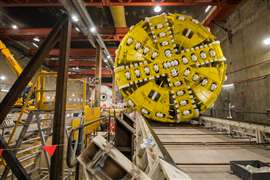 Image: Metro Tunnel Project
Image: Metro Tunnel Project
Tunnelling work on the project began at the end of 2019 and completed in 2021 with four TBMs digging from either end of the two parallel tunnels 35 meters under the ground. The first trains started running on the network in July 2023 and the network is expected to open to the public later this year.
In 2019 construction of the Metro Tunnel hit the headlines when, shortly after tunnelling work had started, it ground to a halt between North Melbourne and Kensington and the TBMs switched to standby as a dispute raged between the contractor and the Victorian government over who should pay for financial overruns.
Heron declines to comment on the dispute, which was resolved when the contractor and the state agreed to split the A$2.74bn cost blowout on the initial A$11bn budget.
“The cost of the Metro Tunnel Project is $12.6 billion,” Heron says. “Like all construction projects in Australia and around the world, the Metro Tunnel faced unprecedented challenges during the pandemic, including impacts on worldwide supply chains, that no-one could have predicted. The project is progressing as planned and is managing performance and risks well.”
Certainly, aside from the rising costs associated with the project, the pandemic also had a major effect on early tunnelling work in 2020.
“Steps were put in place to keep Victorians safe and ensure construction on the project could continue as planned,” Heron says. “These included physical distancing, site shutdowns, increased PPE and site cleaning, staggered shifts and mandated worker density limits.”
And, constructing an underground megaproject during a time of enforced social distancing was far from the only technical challenge the project has faced.
Heron says that one major problem for the construction teams to work around was Melbourne’s difficult geology and the crowded nature of the city both above and below ground.
“Melbourne is well known for having more challenging geological conditions than other cities such as Sydney,” he says. “In Sydney, the geology is more consistent – being sandstone. Melbourne’s unique geology – known as ‘Melbourne formation’ – presents greater variability and is a far more difficult environment in which to work.”
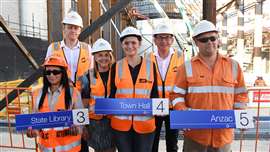 Vote winner: Jacinta Allan, then-minister for public transport and major Projects (3rd from the left) and the then-premier of Victoria, Daniel Andrews (4th from left) pose for a photograph with Metro tunnel Employees at a construction site for one of the new Metro Tunnel train stations in Melbourne’s CBD in November 2017. Photo: Reuters/James Ross
Vote winner: Jacinta Allan, then-minister for public transport and major Projects (3rd from the left) and the then-premier of Victoria, Daniel Andrews (4th from left) pose for a photograph with Metro tunnel Employees at a construction site for one of the new Metro Tunnel train stations in Melbourne’s CBD in November 2017. Photo: Reuters/James Ross
To dig the tunnels, the teams used four slurry TBMs which were purpose built to suit the local ground conditions. Each TBM was 7.28 metres in diameter, weighed more than 1,100 tonnes and was 120 metres long.
As well as having to dig through the unpredictable silt, clay and basalt underneath the city, the TBMs drilling the new tunnel also had to navigate their way just 1.5 meters beneath the city’s existing City Loop underground rail line which continued to operate through the construction as well as the Burnley Road tunnel and dozens of major water, gas and electricity pipes and cables – and across Melbourne’s Yarra River.
“Before tunnelling began under the Yarra, the team completed a range of geological testing and environmental assessments to check ground conditions,” says Heron. “The TBMs travelled about 120m across the Yarra River and tunnelled around 12 metres below the Yarra riverbed.”
And it wasn’t just congestion below ground which the team had to work around. In order to build the two huge CBD stations necessary while allowing Melbourne’s iconic trams to continue running through the heart of the city on Swanston Street and along St Kilda Road – the world’s busiest tram corridor - Heron says the team opted to dig access shafts up to 11 storeys deep to transport machinery, equipment and workers underground to dig out the new stations.
Digging stations under a busy city
Excavation work was done using seven roadheaders – machines with huge cutting heads which slice away and remove rock and sediment underground. The roadheaders were lowered up to 30m underground in pieces, then re-assembled for digging. Each roadheader weighed 118 tonnes, was 15m long and could smash through rock three times harder than concrete. The roadheaders then drilled the stations out of three overlapping tunnels (known as a trinocular design) to integrate the concourse and platforms on a single level, creating 19m-wide platforms.
Once excavated, the caverns were reinforced with sprayed concrete, rock bolts and a final concrete lining.
“This style of construction is like keyhole surgery,” Heron says. “We built shafts right alongside Swanston Street and St Kilda Road and then dug the caverns underground from the side to house the new stations.”
The deepest point of excavation was up to 40m at State Library Station in Melbourne’s CBD, where TBMs have removed 600,000 cubic metres of rock and soil - around one third of the total 1.8 million cubic metres to be excavated for the entire project.
 The tunnel route. Image: Rail Projects Victoria
The tunnel route. Image: Rail Projects Victoria
Here the excavation is so deep that researchers from the University of Melbourne have been able to demonstrate the use of geothermal energy to heat and cool buildings.
During the early months of construction on the new station, the team of researchers buried plastic pipes inside concrete foundation piles that were then installed as part of a retaining wall.
With the ground remaining at a stable temperature throughout the year, water pumped through the pipes absorbs heat from the ground in winter, and releases heat into the ground in summer. When the water comes back to the surface, the change in temperature can be used to efficiently heat or cool the building.
The trial found a train station such as State Library could use the system for all its heating and cooling needs – and even help warm and cool the buildings surrounding it.
And, with construction work on the tunnel now complete, Heron says the network has now moved into a testing phase in which all elements including high capacity signaling, platform screen doors, lifts, escalators, security systems, communications, lighting, plumbing, power are all being progressively tested together.
In 2023, the Victorian government announced that construction work on the stations was so far ahead of schedule that the network would be opening in 2025, one year ahead of schedule while some contractors privately say that the network will start carrying passengers from September 2024.
“The Metro Tunnel Project is on time and is on track to open to passengers in 2025 – a year ahead of its original schedule,” says Heron. “The project capitalised on completing as much work as possible in the early stages of the program, allowing the team to fast-track construction. Work at Arden Station was also accelerated for the team to start testing the systems inside the station, which has been underway for some months. This will let us build reliability in the technology and identify any issues in the system, allowing for a smoother roll out of the technology across the four other underground stations.”
|
STAY CONNECTED


Receive the information you need when you need it through our world-leading magazines, newsletters and daily briefings.
CONNECT WITH THE TEAM









